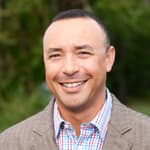4 People-First Focus Areas to Guide Your Next Transformation
A recap of "Tech Transformation in a Remote World" Discussion Panel.
Over the past year and a half, many of us have become accustomed to rethinking how we do things that we previously put minimal thought toward. We have reimagined what it means to send our children to school. We have had to reconsider the ease at which we casually walked into a restaurant and asked for a table. And, we have evolved our understanding of what it means to 'go to work'. In many businesses, the work itself has not changed, but where and how it is accomplished has changed greatly.
Thinking about the necessary shift in work toward a remote employee model, and with an eye toward how that model carries forward, the Propeller Denver office recently hosted a panel discussion featuring prominent Denver-based leaders in Retail and Healthcare. Molly Sudmeier, PMO Director at Air Methods, Mark de Cordoba, EPMO Program Manager at SCL Health, and Austin Williams, VP of Transformation at Crocs, joined Propeller's Carl Terranova for an engaging conversation on Tech Transformation in a Remote World and provided some impactful insights. You can watch the full recording here, or watch the key snippets embedded below.
While the discussion of the various Technology Transformation projects that each of these individuals and their respective companies has undertaken throughout the COVID-19 pandemic was truly enlightening, what surprised me the most were the underlying themes brought to the forefront of the conversation that can apply to any business regardless of project type or the impact of a global pandemic.
# 1. The increased importance of Change Management in non-traditional work environments
Through the pandemic, businesses were forced to shift employees from traditional office-based environments to remote-based home offices. And, while many companies have or will soon begin asking some employees to come back to the office, many organizations are rethinking this strategy and evaluating full-time remote work or a hybrid model with a combination of in-person and remote work. Organizations are constantly changing, and in this new environment, managing that change becomes even more important. As Austin Williams pointed out, when implementing change in a remote environment it is even harder to gauge the people whose jobs or way of working is being impacted and ensure that they are ready for the change. This is where organizations need to be even more thoughtful and diligent about planning out the Change Management approach to the project.
Watch Austin's clip here:
Related Content: Driving Change Remotely: How to Leverage Resources & Build Energy (eBook)
# 2. Using perceived negative outcomes as an opportunity to rethink your strategy
During the panel discussion, Molly Sudmeier explained how Air Methods took a situation with a perceived negative outcome and turned it into a positive for the organization. The company had signed a long-term lease on new office space right before the pandemic hit. With so many employees shifting to working remotely, they were facing a lot of unused space. Rather than focus on the loss and try to renegotiate the lease terms, Air Methods rethought their strategy and asked themselves what their customers needed. Ultimately, they leased additional space, at a discount, and created a Disneyland-like customer experience center to provide them with a first-hand view of the work that they are currently doing and future growth opportunities that are coming soon. By taking a step back to rethink strategy, Air Methods was able to create an experience for their customers that will enhance engagement and do so at a much lower cost structure than previously imagined.
Watch Molly's clip here:
Related Content: A People-Centered Approach to Navigating the Post-Covid Workplace (Blog)
# 3. Utilizing transparency to design the right strategy and gain buy-in from your employees
Few decisions in an organization are met with complete and total support from employees. As organizations are faced with re-imagining where their employees will be asked to work, they know that they will not be able to please everyone. Some employees can't wait to return to the office, while others want nothing more than to work from home. With this broad range of desires, how will companies navigate doing what is right by the business while also gaining employee buy-in?
Mark de Cordoba suggested that by being transparent and equitable, SCL Health is implementing a model that could work. The organization has been creating personas of employees by job type; always in the office/clinic (Nurses), always remote (AP Clerks), and categories that fit into a hybrid model. By utilizing a persona-based approach and designing the workplace solution based on what is needed by the organization from that persona, SCL can provide transparency to the employees and remove perceptions of inequality within job groups. Being upfront about what is needed by the organization, and showing employees why decisions are made can go a long way toward gaining trust and buy-in.
Watch Mark's clip here:
Related content: (1-pager) Increasing Employee Retention by Building Trust
Designing the Future Work Environment With an Employee-First Lens (Webinar + Toolkit)
# 4. The importance of having a strong vision in place to deal with disruptive forces
There will always be something unexpected that pops up out of nowhere and throws a wrench into the gears of our well-thought-out roadmap. Or as Mark de Cordoba likes to call them, 'meteors'; those unforeseen things that follow their own plan, are not on our roadmap, but affect everything. These meteors may be as big as a global pandemic, or they might be as small as a weather event that causes a supply chain disruption. Regardless of the size, if organizations have taken the time to set their strategy and have a 'North Star' by which to guide them, they have a much better opportunity to guide themselves through the disruptive force. Austin Williams saw the COVID-19 pandemic as a unique opportunity to 'stress test' the vision set for his organization. Has it been disruptive? Yes. And his team knew where they were focused and had the guiding principles of their vision. They were able to successfully maintain momentum and rally as a team toward their shared goal. Organizations should be taking the time to focus now on their vision to ensure that when the next meteor falls from the sky, the team is ready to handle it.
Related Content: Responsive & Nimble Planning in the Next Normal (Webinar + toolkit)
# Summary
I love how panel discussions often take you in an unexpected direction and provide nuggets of value that you might not have expected. This panel was no exception. Technology Transformation projects in a remote world have created unique challenges to solve. Many of which are not unique to Technology Transformation projects.
Be sure to visit the Propeller Resource Center for a complete library of resources.
Propeller helps complex companies—at the intersection of People, Process, and Technology—redefine business goals and solution strategies, optimize their technology product delivery, organize their teams to deliver exceptional value, and effectively identify and mitigate corporate risk. Learn more about our Tech Transformation Practice Area.

Brett Dilley is a passion-driven leader, with nearly 20 years of experience leading organizational teams through key business intelligence, data governance, and digital transformation projects across finance, marketing, HR, operations, and IT. An avid backcountry skier and former volunteer ski patroller, Brett finds that creating a plan, communicating it well, consistently evaluating current conditions, and making the necessary adjustments is not only a recipe for success in the mountains but can be equally applied to the professional setting.
Brett prides himself on being a business translator with the ability to navigate multiple organizations and create a common language to ensure people understand the problem, how teams are executing to solve it, and the shared path to success. He received his bachelor’s degree from Colorado State University and a master’s degree in organizational leadership and project management from Regis University.




